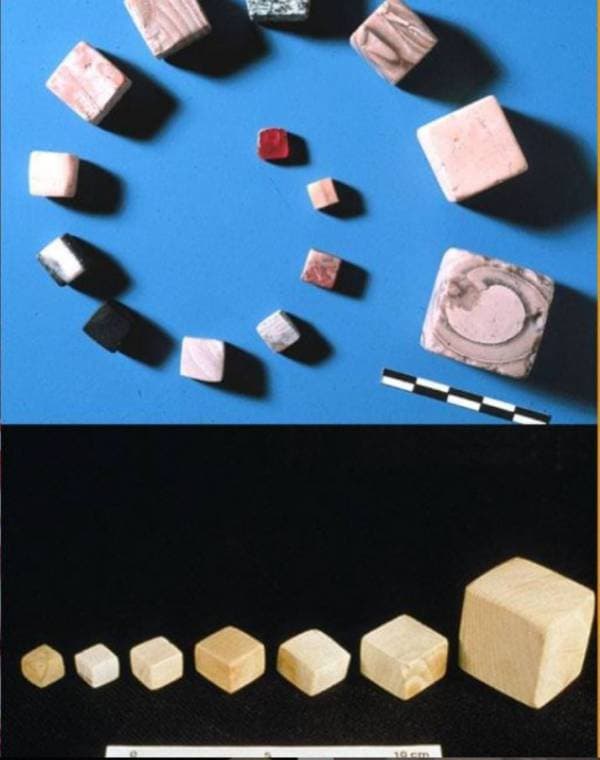Binary System India

The world knows 17th-century European Mathematician Leibniz as the creator of the Binary system. This was taught as a fact everywhere in the world including India and it was never contested. The weights in this picture came to light during excavations in the 20th century in Chanhudaro (c. 3000 BC) on the banks of the now dried up Sarasvati river in Ancient India.
The smallest weight is 0.85 gm. The next is 1.7 gm followed by 3.4,6.8 and 13.6 gm respectively in the ratio of 1:2:4:8:16
In the large weights, the system becomes a decimal increase where the largest weight is 100 times the weight of the 16th ratio in the binary system. These weights were found in recent excavations at Harappa and may have been used for controlling trade and possibly for collecting taxes.
It is striking that these measures continued even in historic India. The weights stood for 1 Anna, 2 Anna, 4 Anna, 8 Anna, and 16 Anna respectively.
Why is it not mentioned in our school textbooks that knowledge of an early form of binary system existed in India before Leibniz?
Source:
- https://trueindologytwitter.wordpress.com/2020/03/26/binary-system-in-ancient-india/
- An article about Chanhudaro excavations published in the American oriental Society by its excavator cum Archaeologist Ernest Mackay.